WordPress isn’t the only free publishing platform out there. By now, anyone who wants to start publishing online has many different platforms to choose from.
In the past, we have already looked into how Medium and Joomla compare to the WordPress platform. It’s about time we turned to another competitor: Tumblr.
The WordPress vs Tumblr duel is an interesting one. Not only is Tumblr one of the most popular publishing platforms out there, at WordCamp Europe 2016, Matt Mullenweg also called it the most serious competitor to WordPress of the last five years.
For that and other reasons, we will talk about what exactly Tumblr is and then give you a rundown of how it compares to WordPress. In the end, we want you to be able to understand the differences between the two platforms and decide what to use for your own blog.
Let’s dive right in.
What Is Tumblr?
Tumblr is a microblogging and social networking site. It was founded in 2007 and purchased by Yahoo in 2013. The site enables users to publish multimedia, text, and other content as well as interact with one another.
To give you an idea about its size, Tumblr currently hosts over 300 million blogs that accumulate over 550 million monthly visitors. Many of the people who use the platform belong to the 18-and-under user group, probably due to Tumblr’s ease of use.
Getting Started With Tumblr
The blogging platform can be used for free by anyone. Sign up is easy. All you need is an email address, password, and username.
After that, you state your age and agree to the terms and conditions. One captcha later, you are in.
During setup, Tumblr will ask you to choose five topics you are interested in. From that, the platform will build your dashboard and provide the first content suggestions and user accounts to follow.
The Tumblr Dashboard
Once you are done with onboarding, you will land on the dashboard, which is the central control room of any Tumblr blog.
One of the main attractions here is the feed of posts from other Tumblr blogs with content relevant to the topics you picked earlier. You are free to share, reblog, and like anything that pops up here, similar to Twitter or Facebook.
The dashboard also contains recommended Tumblr blogs for you to follow and you can use the search bar at the top to look for anything you want on the entire network.
In addition to that, you find options to check your messages, chats, explore content, change account settings, and design your blog. All in one convenient place.
How To Create A Post In Tumblr
Of course, as a blogging platform, one of the main functions of the Tumblr dashboard is to let you create and publish content. This is done in one seemingly simple but powerful editor box.
First, you have the choice between different types of posts:
- Text
- Photo
- Quote
- Link
- Chat
- Audio
- Video
Just click on one of the symbols to get started. After that, follow the instructions to create your content. You may add additional media or tags, and more advanced stuff like set a custom post URL or publishing date.
After that, hit publish, and you are done. Alternatively, add the post to your queue, save it as draft, publish the post privately, or schedule it for a later point in time. Even newbies will get their bearings quickly.
Sounds good so far, doesn’t it? Now let’s see how the platform compares to WordPress.
WordPress Vs. Tumblr – What’s the Difference?
Alright, from here on out we are getting to the meat and potatoes of the article (or, since I’m a vegetarian, rather the tofu and quinoa). In the following, we will look at how Tumblr compares to WordPress in a number of categories.
Note that we will talk both about the hosted and self-hosted version of WordPress. That’s because Tumblr actually has a lot more in common with WordPress.com than the open-source content management system available at WordPress.org.
Cost? Nada
Covering cost is pretty easy since Tumblr doesn’t take a dime to set up. You are free to sign up and use your site without paying anything, ever.
The only costs you might run into are voluntary, such as choosing premium theme or custom domain, in which case you need to pay for the registration and ownership of that domain, not for using it with Tumblr. However, that’s it. Pretty sweet, right?
With WordPress, the situation is quite similar. You can easily set up a WordPress site for free. The platform only charges for certain features and premium themes.
With self-hosted WordPress, the software itself is completely free to use. Yet, as the name suggests, if you want to build a website with it, you will need server space and a domain, which usually aren’t free.
Ease Of Use – Tumblr Has Everything In One Place
The Tumblr interface is very simple and packs a lot of functionality into very little space. One of the best examples for this is the editor and the way Tumblr allows users to format their content. The options only appear after you mark existing text.
With a simple click, you can make it bold, italicized, turn text into a headline, add links, and more. For the more tech savvy, there is also an option to write content in HTML or via Markdown.
Changing your blog’s appearance is just as easy. Just hover over your blog symbol and click Edit appearance.
After that, you can change the header image, profile pic, blog title, description, background color, and accent color with a few clicks. Anyone who has ever set up a Twitter profile will have no problem finding their way around.
In contrast to that, the WordPress interface offers a lot more options.
That’s no wonder since as a full-fledged content management system, WordPress comes with a lot more functionality. At the same time, however, the platform also divides its functions into sections and comes out looking simpler and cleaner.
While Tumblr does a good job creating a minimal dashboard, I sometimes found it a little confusing and some functionality hard to find.
Customization Capabilities
Tumblr lets you change your design in bigger ways via themes (under Account > Edit Appearance > Edit Theme). You can find all available themes, both free and paid, here. For easier navigation, they are ordered in different categories, like minimal, good for text, fancy header, responsive, and more.
If you know your way around HTML, you can also make changes to your existing theme or code completely on your own.
While that is a nice touch, it pales in comparison to what WordPress has to offer. The official directory alone contains thousands of themes. Plus, many themes come with several layout options, special page templates, the ability to change colors, and other customization options.
That is in addition to WordPress’s own features like widgets and customizable menus and with some knowledge of HTML, CSS and PHP, there is pretty much nothing you can’t change about your WordPress website.
Finally, there are over 45,000 plugins in the WordPress directory that can add further customization options. The ability to add custom styles to the WordPress editor is just one example, there is plenty more where that came from.
SEO Options
Search engine optimization is a bit of a fickle topic with Tumblr. First of all, the platform is not really built for long-form content, which is what usually dominates the Google SERPs.
As mentioned, Tumblr users share mostly short and visual content. Not something you often see on the first page of Google too often, unless you use image search.
Of course, it is also entirely possible to write longer posts in order to rank higher in search engines and Tumblr also has SEO options to offer.
First of all, users can get their own custom top-level domain (instead of a Tumblr subdomain like http://yoursite.tumblr.com). Keywords in the domain name are a powerful indicator for search engines.
Furthermore, you can link between Tumblr posts, which is another thing search engines like and the platform even creates an XML sitemap for each blog that you can submit to webmaster tools.
Last but not least, users are able to add title tags, meta descriptions, heading tags, and more on-page SEO ranking factors. The only problem: In Tumblr you need to do all of these things by hand through editing you post HTML and theme files. Not good for non-technical users.
In contrast to that, WordPress has excellent SEO capabilities out of the box, one of the many benefits of the WordPress platform, for example, the ability to set heading tags inside the WordPress editor.
In addition to that, with SEO plugins like Yoast SEO (read our comparison with All-in-One SEO Pack) it is possible to set title tags and meta description without coding anything.
For that reason, if your goal is to dominate the search results, WordPress is probably the better way to go. However, you can still use Tumblr to improve your main site’s SEO and marketing.
Ownership
Another area in which Tumblr falls short is content ownership. Users basically “rent” a free website on Tumblr that they can use to publish content.
Yet, everything you put out there remains on someone else’s server, Yahoo’s in this case, and you can neither download it nor otherwise claim ownership over it (though it is possible to move your Tumblr content to WordPress).
In self-hosted WordPress, on the other hand, everything you produce is completely your own. Your content lies on your own server and you are free to download, move, and do with it what you will.
Even when you are using the hosted version of WordPress, you can always move your content to a self-hosted WordPress website whenever you want. Therefore, if you wish to own your content completely, WordPress, again, has the upper hand.
Interaction
The biggest strength of Tumblr is that it is not just a blogging platform but also has strong social component and community. Think of it as Twitter with more words or Facebook with less advertisement.
Users can browse, reblog, share, and like the content of others, follow accounts to receive their updates, write messages to one another and more. In fact, much of the content on Tumblr is not original but curated and shared across accounts.
In addition to that, Tumblr has a bunch of handy mobile apps that make interaction with other accounts even easier.
Out of the two WordPress versions, WordPress.com is the more similar to Tumblr. Inside its Reader section, users also find a feed with fresh blog updates from their network which they can like, comment on and share on their own blog.
Following other users is also possible and overall sites located on WordPress.com are much more part of a network than self-hosted websites.
In the latter case, your site stands very much on its own and you need to create your own audience by publishing content and sharing it on social networks. After that, when people come to your website, they can interact with your content via good ol’ blog comments.
In addition to that, it’s also possible to add social sharing buttons, add email sign-up forms, or use a commenting system like Postmatic to increase interaction with users.
In short, all three options offer possibilities for user interaction. Only the way the interaction is fostered differs.
Conclusion
Tumblr is a blogging platform for mostly short-form content with very impressive user numbers. It is free to use and offers anyone an easy way to create their own blog and start publishing on the web.
When looking at a comparison of WordPress vs Tumblr, it quickly becomes obvious that the two platforms are made for very different purposes.
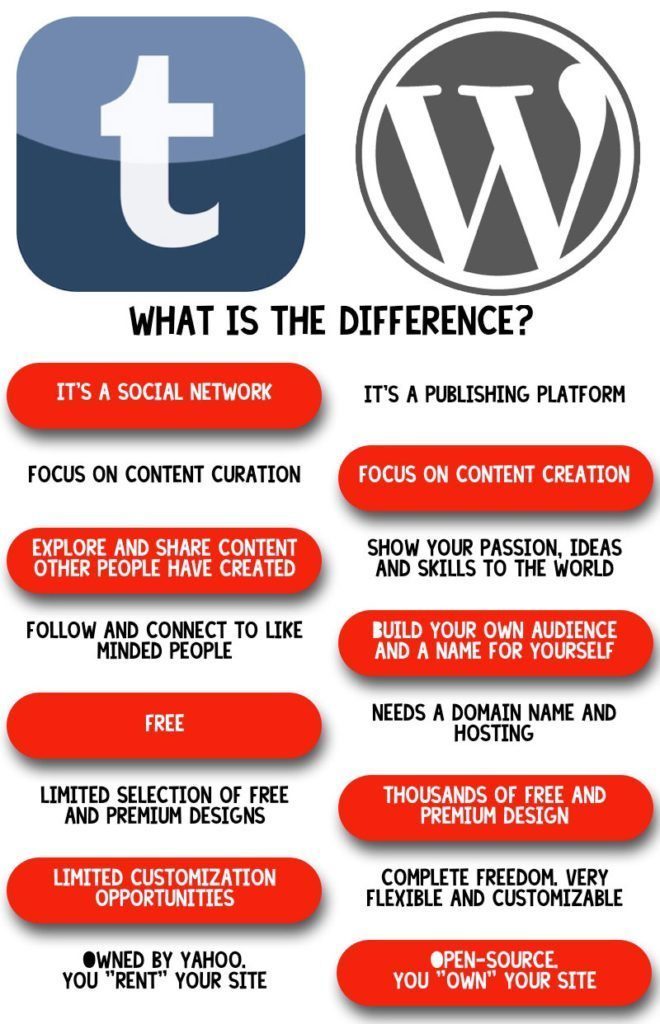
While Tumblr has comprehensive blogging capabilities, it’s main focus seems to be more on community, sharing, and interaction within the site network, not so much publishing for the web at large.
For that reason, if your goal is to build a custom website with an audience, rank high in search engines, build an email list, do eCommerce, or anything more sophisticated than sharing content, WordPress is the choice for you.
We hope this article helped clarify the differences between WordPress and Tumblr and you now feel ready to make a choice for yourself. Whichever you choose, good luck with your website!
Have you used Tumblr before? For what purpose? What was you experience? Any thoughts on the above? Let us know in the comment section.

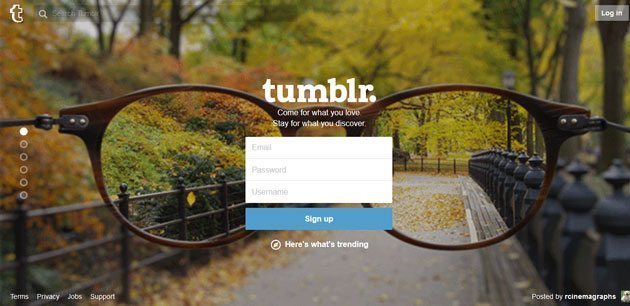


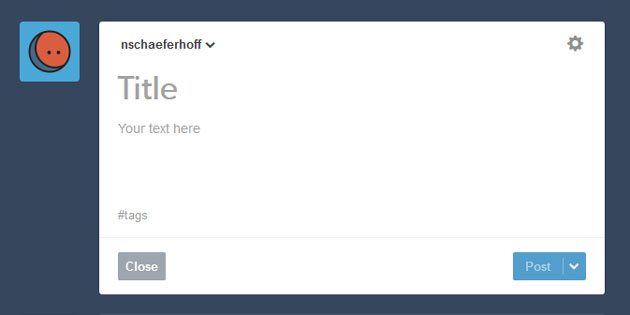



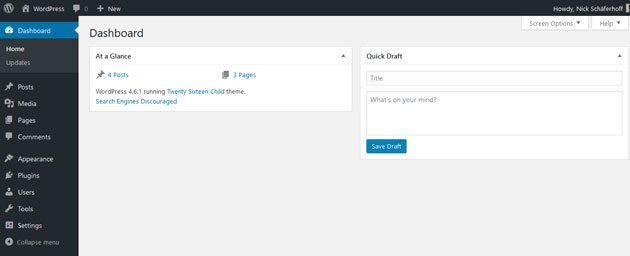
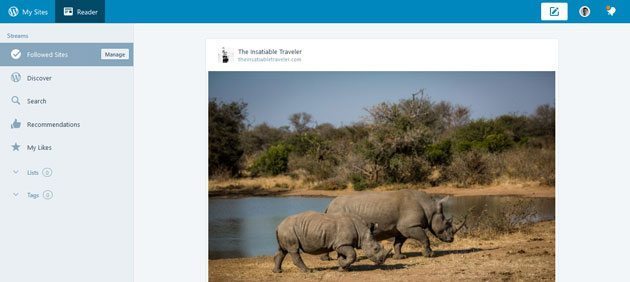
4 Comments